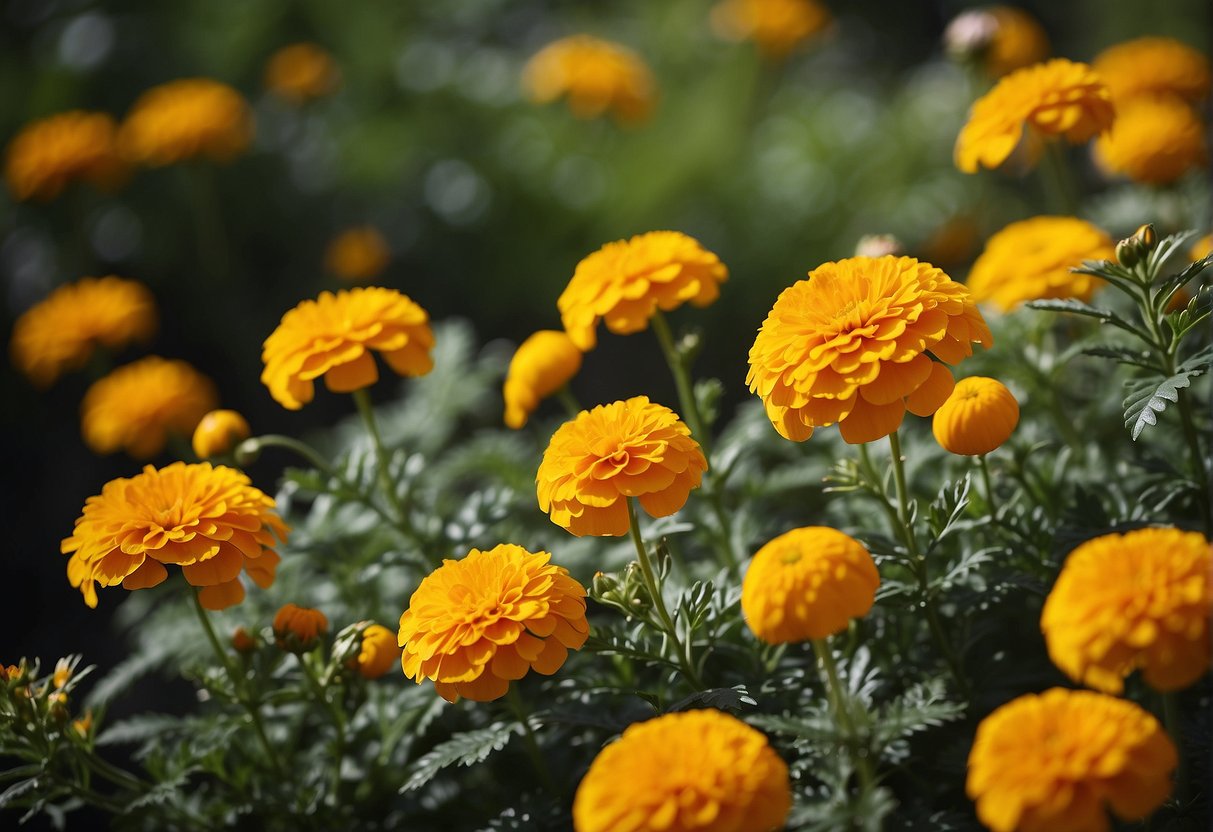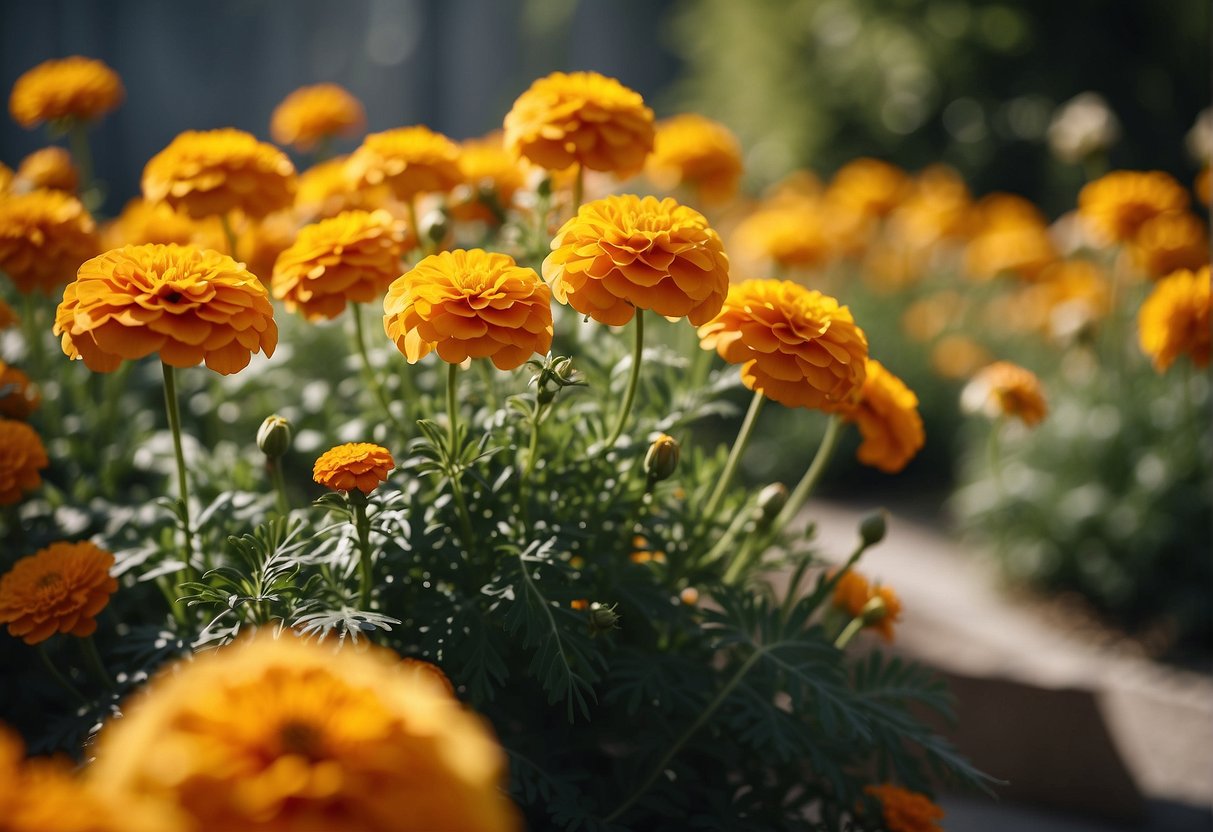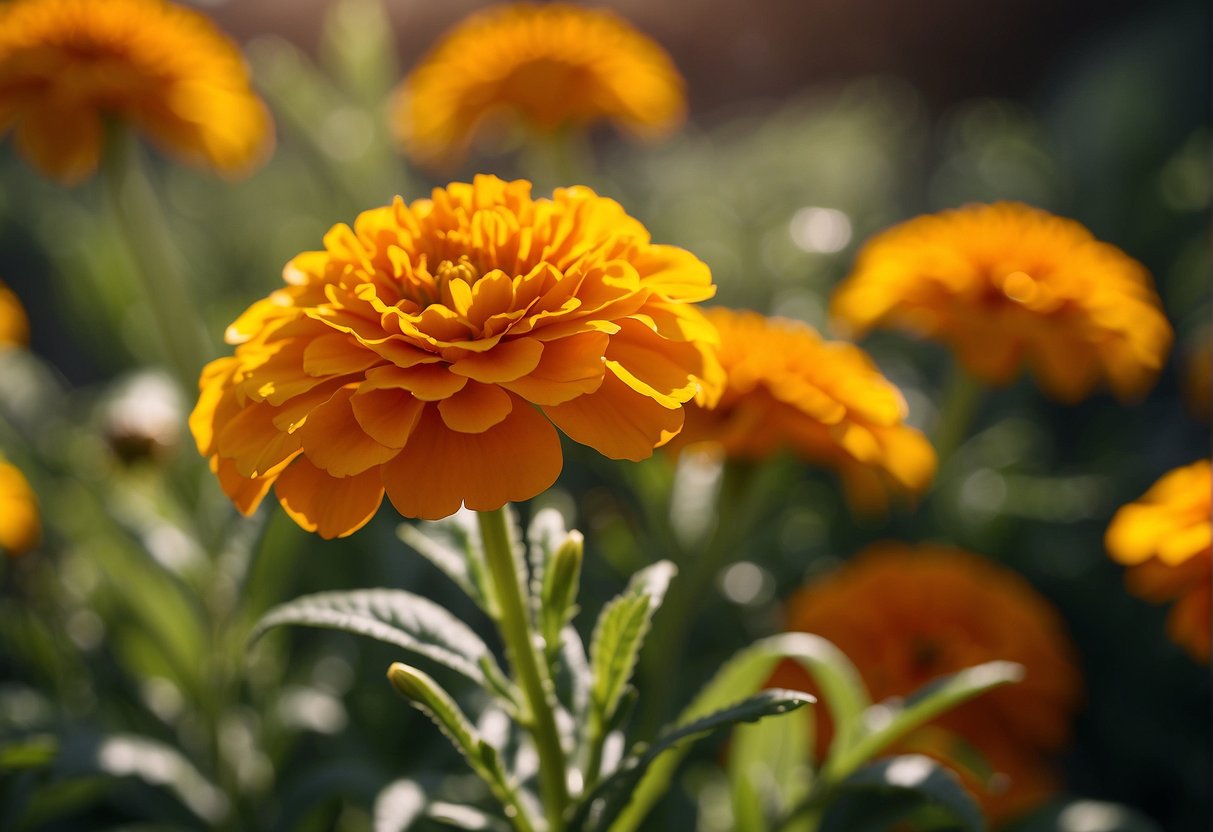Marigoldsare a popular choice for many gardener due to their bright and vivacious blooms . However , there is often confusedness about whether marigold need full Sunday to flourish . In this article , we will explore this topic and put up a clear solution .
Marigolds are known for their ability to stick out a wide orbit of produce condition , include dissimilar soil eccentric and spirit level of wet . However , when it comes to sunlight , marigolds do substantially in full Dominicus . This means they require at least six hours of direct sunshine each day to produce and flower to their full potential .
For nurseryman who are incertain whether their garden incur enough sunlight , it is important to take note of the amount of sunshine exposure in unlike orbit throughout the day . This will help make up one’s mind the skillful localisation for planting marigolds and see they get the necessary amount of sun to thrive .

Understanding Marigold Sunlight Requirements
Marigolds are a pop pick for gardener due to their shiny colors and well-situated - to - rise nature . However , to ensure optimum growth and blooming , it is important to understand their sunlight requirements .
The Importance of Full Sun for Marigolds
Marigolds require full sun to thrive . This think of they need at least 6 hour of direct sunlight each day . Without enough sunlight , marigold may become leggy and weak , with fewer flush .
It is important to note that full sun does not mean intense warmth . Marigolds can tolerate in high spirits temperatures , but they also need a breach from the sun ’s ray to forfend drying up and heat stress . Therefore , consider plant marigolds in an area with some shade during the hottest parts of the Clarence Day .
Effects of Sunlight on Marigold Growth
Sunlight plays a crucial role in the growth and blooming of marigold . It help oneself to mold their internal process and spark the production of paint that give the flowers their vibrant people of color .
In addition , sunlight affect the overall size and shape of marigold . Plants that find enough sun be given to be more succinct and shaggy-coated , with more blooms and a longer flower period .
On the other script , marigolds that do not receive enough sunlight may become marvelous and lank , with fewer flowers and a shorter blossom menstruation .

In decision , marigolds need full sun to rise and bloom by rights . nurseryman should ensure that their marigolds receive at least 6 hours of direct sunlight each 24-hour interval , while also providing some shade during the live parts of the day . By understanding their sunlight necessary , gardeners can guarantee that their marigolds thrive and provide a beautiful display of color in their garden .
Selecting the Right Marigold Varieties
Marigolds are a popular option forgardenersdue to their vivacious colors and easy - to - raise nature . However , not all marigold are created adequate , and it ’s important to select the right variety for your garden ’s demand . Here are some things to conceive when selecting marigold diverseness .
African vs French vs Signet Marigolds
There are three main types of marigolds : African , French , and Signet . African marigold are the bombastic and most vulgar type , with large , showy blooms in shadowiness of yellow , orange , and blood-red . Gallic marigolds are smaller and bushier , with little rosiness in shades of scarlet , white , and yellow . Signet marigolds are the smallest of the three , withtiny bloomsin shades of yellow and orangish .
When it comes to sun exposure , African marigold prefer full sun , while French and Signet marigolds cantolerate some shade . If you have a sunny garden , African marigolds are a with child choice for tot up a dada of people of colour .
Color Variations and Sun Exposure
Marigolds come in a variety of colors , include red , white , yellow , and orange . When it comes to sun exposure , it ’s important to select a sort that can abide the amount of sunshine in your garden . African marigolds , for deterrent example , prefer full Lord’s Day and can handle hot , dry conditions . Gallic and Signet marigolds , on the other hired hand , can abide some spectre and are a practiced choice for garden with fond sun .
It ’s also important to consider the colour of your marigold when selecting a variety . If you ’re looking for a vivid tonic of color , chickenhearted and orange African marigolds are a majuscule choice . If you prefer a more subdued color pallet , Gallic marigold come in refinement of red , white , and yellow . Signet marigolds are a practiced alternative for supply a touch of yellow or orangish to your garden .
In ratiocination , pick out the right marigold variety for your garden look on several factors , including Lord’s Day photograph and color predilection . By moot these factors , you’re able to choose a variety that will thrive in your garden and lend abeautiful touch of people of color .

Optimal Soil and Watering Practices
Soil Requirements for Healthy Marigolds
Marigolds fly high inwell - drained soilthat is rich in organic affair . They favor a somewhat acidic grime with a pH range of 6.0 to 7.0 . The ground should be loose and crumbly to allow for right aeration and drain . marigold need a grime that is not too compact , as this can lead to piteous root development and stunt their outgrowth .
To amend the ground quality , gardeners canadd compostor other constitutive matter to the soil . This will help to increase the soil ’s natality and improve its water - have got capacity . It is important to forfend using too much fertiliser , as this can lead to excessive growth and slim down the routine of bloom produced .
Watering Needs and Schedule
marigold require regular watering to assure that the filth stay moist , but not waterlogged . It is important to quash overwatering , as this can precede to radical rotting and other fungal disease . The frequency of watering will depend on the filth character , weather condition condition , and the size of the plant .
A ecumenical rule of pollex is to water system marigold profoundly once a week , or more ofttimes during hot and teetotal weather . Gardeners should irrigate the soil around the plant , rather than the leaf , to forestall the growing of fungal diseases . It is also important to ensure that the soil has good drainage , as this will forbid weewee from accumulating around the root .
In sum-up , marigold require well - drained soil that is rich in constituent subject , and veritable lacrimation to ensure that the grease remains moist but not waterlogged . By abide by these soil and watering practices , gardener can ensure that their marigolds grow hefty and produce an abundance of flowers .

Planting and Care for Marigolds
marigold are loose to uprise and care for , making them a pop option for nurseryman of all levels . Here are some tips on planting and caring for marigold .
Starting Marigolds Indoors vs Outdoors
Marigolds can be started from seminal fluid indoors or plant directly alfresco . Starting them indoors allows for early flower and a longer growing season . To start up marigolds indoors , sow the seeds in a well - enfeeble soil mix about 6 - 8 hebdomad before the last expected frost . Keep the dirt moist and affectionate , and once the seedling have grow two sets of leaves , they can be transplant outdoors .
Planting marigold seeds straight off outdoors is also a viable choice . hold back until after the last expected frost and sow in the seed in well - enfeeble soil . marigold prefer full Sunday , so choose a sunny spot in the garden .
Seasonal Care and Deadheading
marigold are yearbook and will involve to be replanted each yr . During the grow season , marigold should be watered regularly and fertilized every 2 - 3 weeks . Deadheading , or removing spent blooms , will boost the plant to produce more flowers .
As the season comes to an end , marigolds may start to look tired and leggy . At this point , it ’s right to hit the plants and commence fresh the undermentioned year .
Overall , marigolds are a gloomy - maintenance works that can add vibrant color to any garden . With proper planting and maintenance , they will thrive and supply beautiful peak throughout the season .

Protecting Marigolds from Pests and Diseases
marigold are generally easy to grow and asseverate , but they can still come down fair game to blighter and diseases . Here are some pourboire forprotecting marigoldsfrom these common job .
Common Marigold Pests
marigold are susceptible to a routine of pests , including whiteflies , aphid , and wanderer mites . These pests can cause terms to the leaves and blossom of the plant , top to scrubby growth and reduced bloom .
One effective elbow room to forbid these pest is to keep the area around the marigolds neat and liberal of debris . idle leaves and other industrial plant stuff can pull in pests , so polish off them can help keep the pests at bay .
Another pick is to usenatural pest dominance methods , such as preface ladybeetle or lacewings to the surface area . These insects are natural predators of many common marigold pests and can avail keep populations under control .
Preventing and Treating Diseases
Marigolds can also be vulnerable to a variety of diseases , including powdery mildew and stem putrefaction . Powdery mildew is a fungal disease that can cause a white , powdery covering to form on the leaves and stems of the plant , while root buncombe can get the plant to wilt and pass .
To foreclose these disease , it ’s important to keep the soil around the marigolds well - drained and to keep off over - watering . Watering from the bottom can also help forestall powdery mildew by keeping the leaves dry .
If a disease does occur , there are a few handling options available . For powdery mildew , a solution of bake soda and water can be sprayed on the unnatural domain to aid control the fungus . For rootage rot , removing the feign works and improving grunge drainage can help oneself prevent further spread of the disease .
Overall , with a little care and attention , marigold can thrive and add a burst of colour to any garden .
Frequently Asked Questions
How many hours of sunlight are required for optimal marigold growth?
Marigolds thrive in full sunshine , which means they need at least six hour of direct sunlight each twenty-four hour period . However , they can still grow in fond subtlety , but they may produce fewer blossom and have a less compact growth habit .
What are the watering requirements for marigolds?
marigold favor well - drain soil that is kept consistently moist but not waterlogged . Overwatering can lead to antecedent rot and other diseases , so it ’s important to avoid letting the soil become too pixilated . Watering once or twice a week is commonly sufficient , but the frequency may vary look on the mood and soil conditions .
Can marigolds thrive in shaded areas or do they require direct sunlight?
While marigolds prefer full sun , they can still grow in fond shade . However , they may produce few flowers and have a less succinct growing wont . If you ’re planting marigolds in a shaded area , verify they still receive at least four hours of direct sunlight each day .
What are the best practices for growing marigolds in containers?
marigold can begrown in container , but it ’s crucial to choose a container that is large enough to adapt their root organization . Use a high-pitched - quality potting mix that is well - draining and fertilize on a regular basis with a balanced fertilizer . piddle the container on a regular basis , but make certain to invalidate overwatering .
How can I encourage continuous blooming in marigolds throughout the summer?
Deadheading , or removing spend flowers , can facilitate encourage continuous blooming in marigold throughout the summertime . It ’s also significant to fertilize regularly with a balanced fertilizer and to make certain the industrial plant are dumbfound enough sunshine and pee .
What should be done with marigolds when the growing season ends?
At the end of the grow season , marigold can be cut back to the earth and compost . If you plan to save up the seed for next year , allow for the flowers to fully grow and dry on the plant before harvesting the seeds . Store the seeds in a nerveless , ironic place until you ’re quick to found them in the spring .